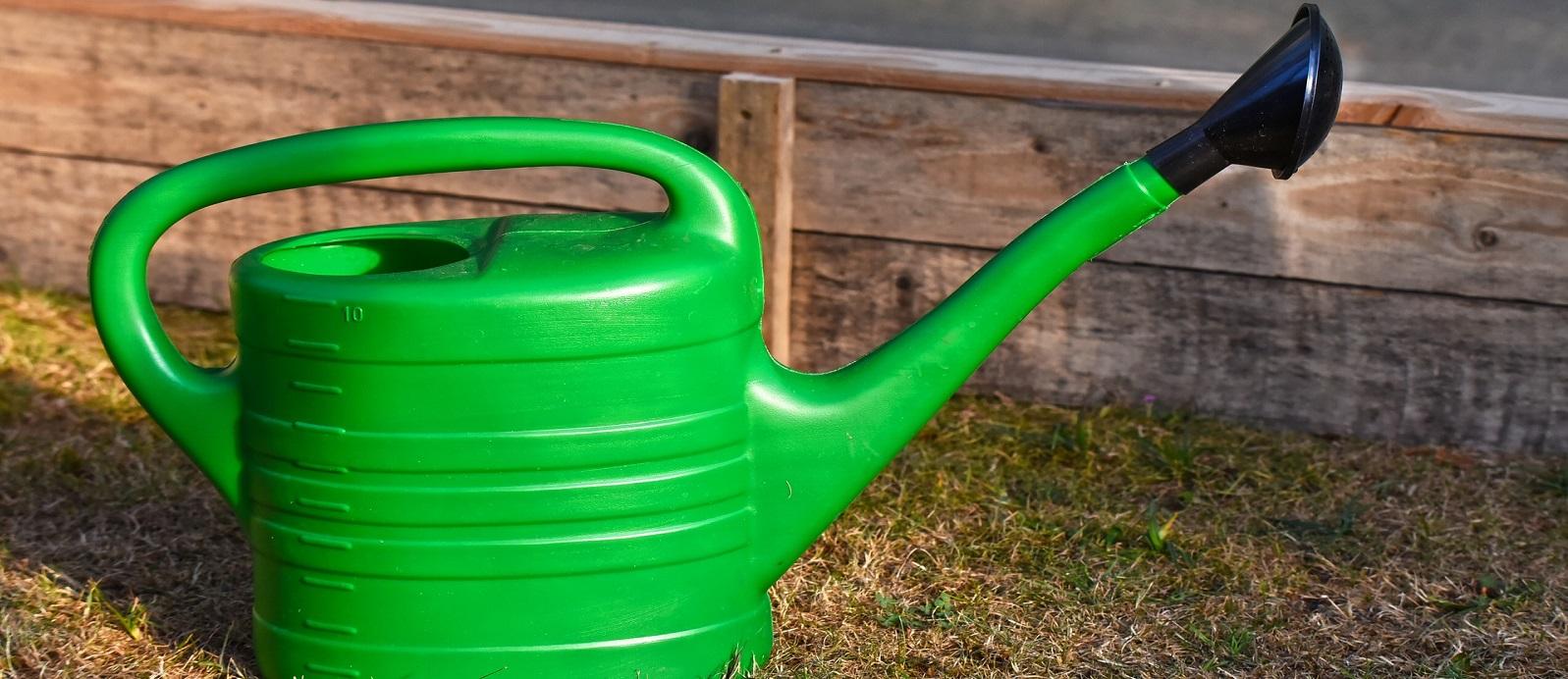Watering container-grown vegetables
The limited volume of growing medium available to container vegetable plants makes it critical to keep the root system moist at all times.
- Improper watering (both too much and too little) tends to be the most limiting factor in container gardening success and the number one reason for failure.
- The amount needed and frequency of watering will vary based on the plant type, the size of the plant, and size of the container. As well as the location of the planter (full sun versus shade) and the overall volume of potting soil or how much space is available for plant roots.
- Large volumes of potting soil can hold more moisture and will not need to be watered as much as smaller containers with less soil. Plants will need more water as the plants get larger and the temperatures get hotter.
- Always apply water at the base of the plant not on the leaves, to help eliminate diseases.
- To check and see if you need to water simply check the soil, by pressing a finger into it. If the soil is dry then water it, if not then wait until it feels dry to the touch.
- Avoid quick shallow watering, instead water containers until water starts to run out of the drainage holes.
- Several shallow waterings are not nearly as effective as one single long water application.
- Remember that containers that are located near a home, building, or porch will not receive natural rainfall.
- If containers go too long without water you might have soil shrinkage, which is when a gap develops between the soil and the edge of the container. Water will then flow through the gap leaving the soil dry. Repeated watering will be needed to rehydrate the soil. The container can also be immersed halfway in a bucket or sink filled with water and left until the surface of the soil is moist.
- Applying too much water, too often and not having enough drainage for excess water are the leading causes of overwatering. This can lead to root rot and other diseases. Empty saucers under the container after watering or after a rainfall event.
- Use pot feet to raise containers to allow for better drainage.
Fertilizing container-grown vegetables
- Regardless of the growing media used you will need to fertilize plants regularly. As watering results in the leaching of nutrients from containers.
- The amount of fertilizer needed will depend on many factors including what type of plant(s) you are growing, the size of the container, how often it’s watered, as well as what type of fertilizer is used.
- Long-season vegetable crops such as tomato, cucumber, eggplant, and pepper may need to be lightly fertilized every 2 weeks, to produce a continuous harvest.
- There are several types of fertilizer available for containers; however, the easiest forms are slow-release granular or dry powder water-soluble that is mixed into water. Slow-release fertilizer products come as pellets that can be mixed into the growing media.
- Slow-release fertilizers are made of water-soluble fertilizer that is encased in a semi-permeable resin coating. When they come in contact with water, small amounts of nutrients are released to the soil for use by the plant. So, each time you water, the containers are getting "automatically" fertilized. Water-soluble fertilizers are normally sold as a powder that can be mixed with water and applied.
- If there is fertilizer already mixed in with your growing media then your plants should have enough for a few weeks, after which additional fertilizer will be needed.
- Always read and follow the label on the fertilizer product you are using. Using too much can burn the plant and cause excessive salt to build up in the soil profile, so take care, not to over-fertilize.
- Never add lime, wood ashes, or gypsum to any commercial growing media or compost. Lime is already added to commercial soilless mixes. Compost, either commercial or backyard, has a pH of 6.8-7.5 (a soil pH of 6.2-7.2 is a good range for most vegetable plants.)
